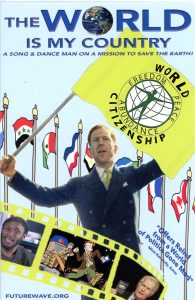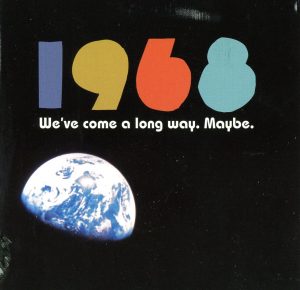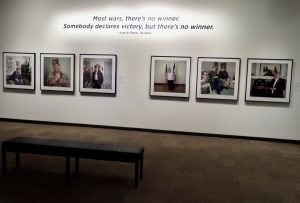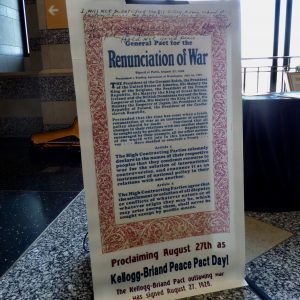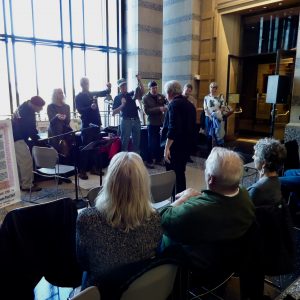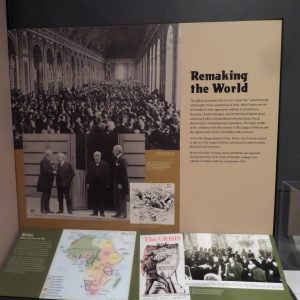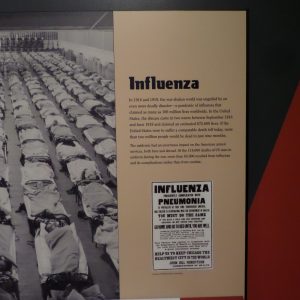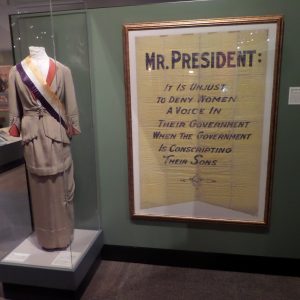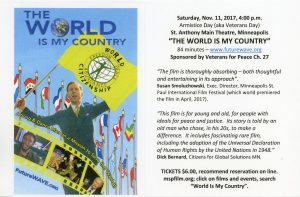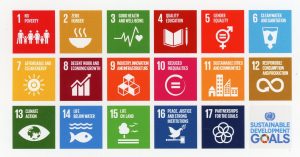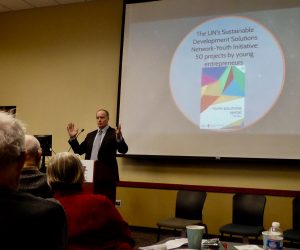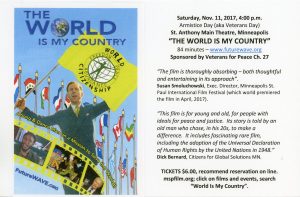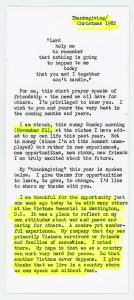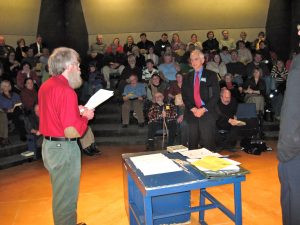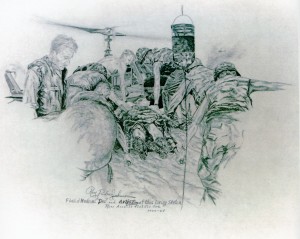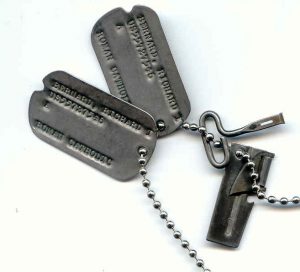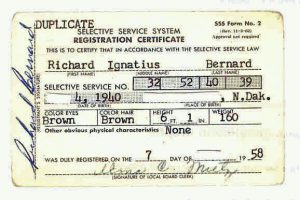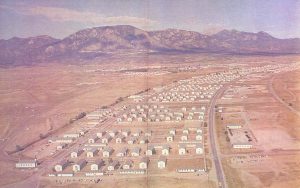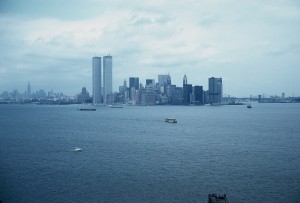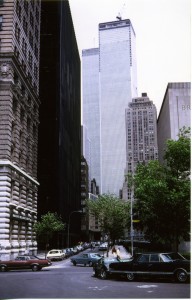Added Nov. 16, 2017: Here is a three minute clip of personal observations on Vietnam made in St. Paul Sep. 7, 2017.
COMMENTS at end of this post.
My thoughts. If nothing else, listen/watch Jim Northrup talk about Vietnam and War.
The most powerful testimony I’ve ever heard about the reality of Vietnam came from Native American author Jim Northrups remarks at the 2014 Veterans for Peace Memorial Day observance at the MN State Capitol Vietnam Memorial. View here. (Scroll down to “Peacemakers of Minnesota”. The Northrup segment is 20 minutes, at 6:55 – 26:11, and includes two segments. It is verbal and powerfully graphic. Four other Vets for Peace share the remaining 10 minutes.) (Also, see POSTNOTE at end of this blog).
(click to enlarge, double click for more).
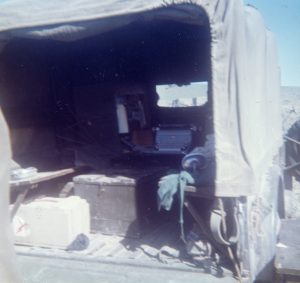
Field Office, 1963, Yakima Firing Range Washington
Above is a snapshot I took of my “field office” as Company Clerk of Co. C. 1st Battalion,, 61st Infantry, 5th Infantry Division (Mech), while on maneuvers at Yakima Firing Range, Washington, May, 1963. We were preparing our Infantry Division for someone else’s future duty in Vietnam. As Company Clerk, one of my responsibilities every day was to do a letter perfect “Morning Report” which had multiple copies with a standard format reporting previous days activities, including personnel status (including to my recollection name, rank, serial number, status, such as “leave”, “promotion” or “demotion”…). The only way to deal with errors was to retype the entire report. I probably did 500 of these “Morning Reports” Morning Reports recorded the History of War at the basic level. (More in NOTE ONE, below)
*
I watched every one of the 17 hours of Burns/Novick’s Vietnam War on PBS, and felt it was outstanding, and as accurate and complete a reflection of the reality as could be summarized in 17 hours.
Our country, unfortunately, has an entire history of War. It is our metaphor for life, in a way. Last year I did a graphic to help me understand our own history:

I was 20 when “the Vietnam era” began in early 1961; 23 when my two years in the Army ended in 1963; about to turn 35 when we lost the war in 1975.
Because I let it be known that I was interested in the PBS series, I have had many conversations, most of which do not see print on these pages. I wrote several times about the series (access here).
A recent e-mail from a good friend seems pertinent: “Also wanted to sincerely thank you for the dedicated and excellent work you have done with the subject of the Vietnam War. With sheepishness I admit that I find myself almost unable to watch/listen to anything about that war. Perhaps I’m the only person in Minnesota who saw not a single minute of Ken Burns’ epic review. For me it is as if the subject is still an open wound, such a tragedy for so many combatants and civilians, for Vietnam as a country, and for our country that has yet to recover from the moral damage.”
As the series ended, I found myself doing a personal timeline “biography” of 1961-75 as the war years related to me. In this simple act of writing down thoughts, some things unremembered came back to mind. Every one in my age range could make such a list, and I’d recommend it. It reveals and is cathartic at the same time.
*
PERSONAL REFLECTIONS. I would summarize in three categories as follows.
(More in NOTE TWO)
1. NUMBERS :
5%
2%
3%
1.4% and 1%
3,000,000/58,000/?
2. THINGS I HADN’T THOUGHT ABOUT IN YEARS (see NOTE THREE)
3. THOUGHTS FOR THE PRESENT AND FUTURE (see NOTE FOUR)
*
NOTE ONE:
All of those 58,000 names on the Vietnam Wall in Washington were likely first reported on someone’s Morning Report in Vietnam, typed by some Company Clerk, like myself, and checked by the First Sergeant who, in my case, was Fredric M. Strong, (a wonderful man in his late 30s. When I knew him at age 22. he seemed old).
The Morning Reports were finally approved by the Company Commander for transmission up the line to Battalion, etc.
Each Army Infantry Company was more or less 140 GIs with a Commander, usually a young Captain, several Platoon Leaders, usually green-as-grass 2nd Lieutenants; and an assortment of Non-Commissioned officers (NCOs), including Mess Sergeant (food), Supply Sergeant, etc. Other than combat infantrymen, there were some assorted duty assignments for enlisted, as mail clerk. Being 2d Lieutenant was hard enough in a training company; I can imagine what it was like in combat.
We were all of of various talents and temperaments, from different backgrounds and regions, thrown together as “warriors” in training.
It is societies ritual to call all of us “heroes”, “thank you for your service”. In reality, we were mostly just paying some kind of dues (the Draft), or looking for a way to make a living or a life. To call us “heroes” simply justifies a war environment: somebody needed to do the dirty work. Most of the “heroes” were like those listed on Washington DC’s Vietnam Wall: They were killed in action.
The enlisted men, draftees and volunteers, were generally very young. At 22&23 and college graduate , I was rather senior among the soldiers. I had an opportunity to opt for OCS (Officer Candidate School) but passed on the opportunity as it would have required an extension in my service.
We were a “motley crew” in every sense: from many different states, religions, nationalities, ethnicities. A best friend was a native of Hungary, not long before a refugee from the 1957 revolution there; another was native of British Columbia, Canada, etc. Thinking back, it had to be an immense job to manage the differences and the constant change, and this was before time of actual combat….
(Personally, I have never renounced or denied military service. In my opinion, there will always be war and a need for military. Each generation, each country, including our own, breeds its own evil doers. I’d like to see all swords beaten into ploughshares. This will not happen with humanity as it is.)
As I’ve noted in an earlier post, 27 men from my Company ultimately lost their lives in Vietnam, beginning about 1967. These were 27 names on somebodies Morning Report for Co. C, 1st Bn, 61st Inf, 5th Inf Div (Mech)….
*
NOTE TWO
It would be nice if all were simple as numbers. Nonetheless, numbers do provide a base for discussion.
In 1970, at the hottest time in the Vietnam War, the U.S. population was about 200,000,000, compared with over 325,000,000 today.
5% – see end of this section.
2% – Back in 2010, my good friend, Rev. Verlyn Smith, was awarded the Hawkinson Award for Peacemaking.
In his remarks that evening, Verlyn, a Lutheran Minister, recalled his time as a campus ministry regional director in the western states. His service there came at the hottest time of the Vietnam War. He had evolved into a peace activist. A comment he made has stuck with me these subsequent years: in his recollection, informed by experience, he estimated that no more than 2% of the students were peace activists. The remainder were just going about living as they saw life at the time – classes, work, etc.
Verlyn didn’t make this as a moral statement; rather a reminder that only a small percentage, then, were actually activists.
3% – In his article critical of the PBS series, “The Tragic Failure of Ken Burns’ “The Vietnam War”, writer Christopher Koch, estimates the Peace Movement of the Vietnam War as 6 million (about 3%) of the population. These are only his ideas of reality, but as with Verlyn’s, they are a good basis for conversation.
1.4% and 1% – At the time of Vietnam, it seems that about 1.4% of the population was in the military, not all in Vietnam. A few months ago, when I was at a Marine enlistment ceremony for my grandson, the presider told the recruit that today about 1% are in the U.S. military services. Even in the worst times, a tiny minority serve. They are always the young. We need to be careful about sending our young off to die.
Finally, there are the numbers: “3,000,000/58,000/?” These are the estimates of Vietnamese and American deaths in the Vietnam War. The (?) is those who didn’t actually die in the war, but continue to die from things like Agent Orange and other such effects of being at war, as PTSD, in all its assorted forms. These casualties did not stop in 1975, and don’t stop at national borders.
In my personal history, the one vivid memory from television (the primary source of my information as a civilian) was when the military and Gen. Westmoreland were found guilty in court of falsifying casualty figures. In those years, winning was connoted by how many more enemy were killed than friendly. Always the enemy lost far more than Americans. It didn’t make sense, but it was the only information we had. “Fake news” ultimately had to be called to account. On reflection, I don’t feel any pride at all at killing more than the other side. Then, and I think still, it was the rubric for measuring strength or victory. Killing was nothing more than a number, not somebodies son, grandma or neighbor.
Now, what about that 5%?: Back in February, 2008, I was privileged to be in a living room conversation in St. Paul with Daniel Ellsberg, and members of the Minnesota Eight. In my recounting of the meeting, someone in the circle, perhaps Ellsberg himself, said that you need 5% of the population to really make a viable movement (what I wrote then is here: Daniel Ellsberg 2008001, see p. 2.) Is 5% the accurate number? Probably not. Whatever the case, the Peace Movement never did reach a critical mass for success, even at its strongest point. We carry a lot of baggage….
(The Vietnamese refer to 1961-75 as “the American War”. We were not the only aggressors.)
*
NOTE THREE: THINGS I HADN’T THOUGHT ABOUT IN YEARS….
In composing my personal history of ages 21-35 (1961-75), I recalled something with fresh eyes about the years mid 1966 – August 1969, when I lived in an apartment in Spring Lake Park Minnesota. At the time, a few short miles and about equally distant to the west and to the east, were two major military materiel operations. One was the Twin Cities Army Ammunition Plant, which made ammunition; the other was variously known locally as FMC (Federal Munitions Corporation/Northern Ordnance).
Both facilities were in the business of military contracts for Army and Navy.
Both were large employers, in my memory, thus providing jobs and income to working people.
So, here in my own city, as everywhere, there was a constant tension between the obvious distinctions between peace and war. This tension was well illustrated in an article printed in my college newspaper, May 24, 1961, at the very beginning of the Vietnam era.
(click to enlarge)
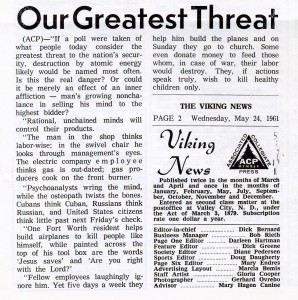
Viking News, Valley City (ND) State Teachers College, May 24, 1961
Another tension happened during the war years, but I wasn’t aware of it until about 2000, when I was cleaning out the house of my brother-in-law, Mike. Mike had had a hard life – didn’t know his father, that sort of thing. He was very intelligent, and he graduated from high school, and in 1969 graduated from the same college as I, Valley City State Teachers College. When he died, in 2007, a letter with instructions for burial self-described him as a “lone wolf”. It was true. He knew himself well.
After college, Mike taught two years in a small town school, and was the teacher assigned as adviser for the school newspaper. As part of that he apparently permitted high school kids to speak their mind about the war, going to Canada, or whatever.
I gathered that it was the kids who wanted to write about this, and he said okay.
This did not sit well with some of the local influentials, and he was let go. He then went into the Army about 1971, which apparently gave him the roots and stability that he sought. He got a top secret clearance, and an assignment to a post in Germany, and was intending to make a career out of the service when someone back home who didn’t like him reported him as unpatriotic and a security risk, investigating him back to college and teaching days before his time in service. The Army set out investigating him.
I found the entire narrative in a long deposition found in his house – the deposition that led to his death as a military man. The questioners zeroed in on every aspect of his college and post college life. A young social studies professor at the college was fingered as teaching what were perceived as anti-war ideas. The professors name was mentioned in the deposition. I won’t repeat it. It was misspelled, and I actually saw the man’s picture in the college annual just weeks ago.
Mike represented a quandary for the military. He was apparently an honorable service man. Mike was given an honorable discharge with a rank of Specialist 5th class – a high rank for a two years soldier. He went home, and spent the rest of his life, chronically mentally ill, a regular client of the VA Medical System from the 1970s forward to the time of his death.
I consider Mike a war casualty. His name doesn’t appear on any wall, just a modest grave in his hometown.
About the same time as I found Mike’s documents, I met another man, Lynn Elling, who showed me a 30 minute film made in 1972, for use in Minnesota public schools, involving an amazing coalition of political and civic leaders. It’s called Man’s Next Giant Leap, and you can access it here. At about 11 minutes a prominent Minnesota Republican politician of the time talks about the economic costs of war. Among others, the film features singer John Denver “Last Night I Had The Strangest Dream”. It is worth the 30 minutes.
In sum, we Americans were at war with ourselves in the time of Vietnam, within our own country.
This continues today, perhaps even worse, though differently than in the Vietnam War. The tension remains.
*
NOTE FOUR: THOUGHTS FOR THE PRESENT AND THE FUTURE
In the series, much was made of lying by Presidents and high level government officials. They all lied about the war. I was particularly noticing the “why” of their lying: to accept and announce the reality that we were losing in Vietnam would be a very bad political (i.e. winning the next election) problem. To be against the war would be costly at the ballot box. It made no difference, Republican or Democrat. To lie on this issue was deemed essential. In effect, “we, the people” demanded the lies.
Robert McNamara is easily fingered as a bad person, an apologist for the Vietnam war. He came to grips with the problems with the war he was promoting quite early on. But the war privately tormented him. Much later in life, the film “Fog of War”, was his attempt to own his part in the tragedy of Vietnam. Years ago, a friend sent me an article he had written about “Just War”. You can read it here: Just War as seen by Robert McNamara Aug 2003001
In late 2017 we are at a truly dismal point in our own national history, but opportunities exist for change if we agree to do the necessary and very hard work.
About the time the Vietnam War series began, President Trump was throwing words around against North Korea at the United Nations, and is almost casual with his threats of doing bad things to anyone who disagrees with him. Suddenly the nuclear arsenal, always a major problem, is proposed for the first time in many years as a solution, rather than the certain calamity it would unleash.
Congress remains complicit in all of this, because for it to be honest about war is considered a liability (see comments about Presidents lying for electoral advantage). It is similar to lobbying for coal mining because military spending represents jobs and prosperity and always has…. For years, Congress has evaded its constitutional responsibility for war making, choosing to blame the President.
Still, I think the vast majority of our citizens, now, have a yearning for peace to get along with each other. I see this manifested every day.
A wise strategy, I think, is to get into the necessary conversations at the local level, working for cooperation and not competition particular among people with generally similar feelings. These conversations need to be with the unconverted, and presume and value other points of view. Talking only with fellow travelers in ideology is not really worthwhile. We need to truly engage with others to find out areas of common agreement.
I would like to see every young person in this country watch and discuss the entire series. (For me, young would be 50s and lower in particular). These folks need to know and understand the dynamics and consequences of a war society. It is their generation which will be devastated by the next war.
The conversation has to center on the “young”. I am again reminded that I was 21-35 in the Vietnam years, and that began over 50 years ago. Those who were active then were the young, my contemporaries. Today’s young have to make their own future. Elders are no longer in a position to give other than wisdom (which is valuable) but the workers are of another generation, our kids and grandkids ages.
I don’t think the 5% threshold mentioned earlier is at all unattainable. But it won’t come without lots of effort and in lots of ways.
POSTNOTE: The video of Jim Northrup and others is part of a series of ten interviews with Minnesota Peacemakers prepared in May and June of 2014 by Ehtasham Anwar and Suhail Abro, both from Pakistan, who were in the Fulbright program of the Human Rights Center of UofM Law School. I’m very proud I could be involved with them on this major project. The remaining interviews will be at the Global Solutions MN website from time to time over the next weeks and months.
COMMENTS:
from Frank: Dick: You are doing incredible service through this site. “VIETNAM War” is a
nightmare for most of us who lived through that time. I’ve had some time
with and know the different but equally horrific sufferings of younger men
and women who are/have been terrorized by this Endless War. One that my dad
and his generation of valiant souls thought they had “ended” when The Atomic
Bomb was dropped… on my first birthday … and back then it was also the
Catholic feast of The Transfiguration! Frank
from Christina: Jim Northrups part of the program was very good, very interesting and very sad. Why do we settle things with violence rather than diplomacy? It makes me think of the song, “Where have all the flowers gone? Where have all the young men gone etc. When will they ever learn? When will they ever learn?”
From a friend: Sometimes war precedes peace. I don’t favor war just to kill and fight; but I do believe war is needed to stop fighting radicals.
Response from Dick: I don’t know what the writer means by “radicals”. There are “radicals” on all sides, I suppose. Whether small or large, down to interpersonal, wars won by overpowering or humiliating the vanquished simply beget the next war. Somewhat related, Jeff send along an interesting discussion of differences in negotiating differences. You can read it here.
Michael sends along a very interesting commentary on what JFK had planned to do had he ran and won the 1964 election. You can read it here.
More from Michael:
Pre-note from Dick: There ensued an interesting side conversation between Michael and another friend, Ron, relating to the assassination of John F. Kennedy. Michael, who is very knowledgeable in such matters, shared the following opinion, which I in turn share with his specific permission. While I do not share his last name, he has a very long history of serious academic and personal involvement and willingness to personally engage in conversation about controversial issues such as this.
Ron started the thread: Thanks for providing that information from Michael about JFK’s plan to get out of Vietnam by the end of 1965. I was unaware of that clear evidence that that was Kennedy’s plan.
Having read that, I now wonder how much that plan of Kennedy to withdraw from Vietnam may have been the reason he was assassinated. Was LBJ himself involved in some way?
Do you (or Michael) have any comments or information about that? Is there any good source of reasoning about that and the details of who actually did the assassination?
In addition Ron asked for Michael’s opinion on 9-11-01
Michael:
Well that is a big question for which there are many, well documented answers. The big problem is the power of modern propaganda so vividly illustrated by Ron’s questions.
So I will cut through many pertinent but long winded complications to summarize my best opinion on these topics at this time. Also note that I have a longer section on Kennedy’s murder in my old book “On the Causes of War” which references 17 or 18 other books, only one of which supports the official story (“Case Closed” by Posner). That list includes Newman’s “JFK and Vietnam.” The conference at Harvard I was invited to in 1993 gave me personal access to many of the best researchers, including Newman and Dr. Cyril Wecht, former President of the Academy of Forensic Sciences who reviewed many details that showed Kennedy was certainly shot from the front right (aka “grassy knoll”) as well as from behind. So, on John F. Kennedy.
As best I can tell, there were 3 guns, 4 shots, 3 hits and a miss. The Israelis were not involved at all in this one.
The conspirators included rogue elements of the CIA, Pentagon and FBI, with some help from the Mafia with whom CIA was already collaborating on assassination plots against Castro out of CIA’s Miami station. All the best books on that important connection are referenced in mine, including testimony from an Army Ranger who was assigned there at the relevant time. His name is Bradley Earl Ayers, and a much more complete version of his perspective is contained in “The Zenith Secret” second edition. He graduated from Stillwater high school here in MN, and retired to the woods in western Wisconsin so I had some years to debrief him. The FBI’s main role was suppression of evidence, the plan was probably drawn up by Gen. Edward Lansdale at the Pentagon, and the CIA and mob provided shooters and a lot of disinformation. The best movie (as in most accurate, although every book etc. has inaccuracies) was Oliver Stone’s “JFK” based largely on “Crossfire” by Jim Marrs and “On the Trail of the Assassins” by Jim Garrison. One of the reasons was indeed Kennedy’s determination to withdraw from Vietnam, but other important reasons were his attempts at nuclear “detente” with the Soviet Union, and his brother Robert’s crusade against the Mafia which felt betrayed after they had delivered many votes in Chicago to help elect JFK. RFK was also deeply involved in “Operation Mongoose” out of CIA’s Miami Station (a long, complex set of covert attacks against Cuba).
On 9/11, it was certainly an “inside job” as the fall of WTC Building 7 in under seven seconds into its footprint most vividly illustrates. Here the Israeli’s probably were involved, but not as prime movers. They could not have silenced and misdirected air defenses at the Pentagon, nor arranged for suppression of evidence there, but Rumsfeld and Cheney could. The Saudi’s were almost certainly involved as well, and possibly Pakistan although the thread of evidence there is a single wire transfer from Pakistan’s ISI to one of the alleged ring-leaders, Mohammed Atta. The prime motive was probably creation of a rationale for 40 years of intense operations against “Radical Islamic Terrorism” including a doubling of defense and “homeland security” expenditures. My little video from February, 2008, gives a reasonable summary of my official position on that tragedy.
Work here calls urgently. These are summaries, all incomplete. Multinational, highly financed, professional psychological operations are always hideously complex with many blind alleys, red herrings and such. The most powerful part of the suppression of evidence aspect (in addition to providing a “patsy”) is sustained ridicule by major media of anyone who criticizes “the official story” which is also, almost always, a conspiracy theory itself. Just a totally misleading one.
from Lois: A year before, almost to the day, you reported for military service I had departed Valley City for San Francisco and lived there thru the entire war in Vietnam. My life went on, day after day, with little thought to that war. Like your friend, I did not watch the Burns’ documentary although I tuned to PBS during the time it was playing just to see if I could rouse an interest. Not so. Perhaps your comment “War is a waste” was the reason, and I “ignored” it again. I was thankful that those I knew, including my brother, joined the National Guard instead of enlisting in the regular military.
Your personal reflections article prompted me to read up on some history, as I noticed that
missing from you list of wars was the Mexican American War fought 1846-1848. 15,000 lives lost, 1773 died in battle, over 13,000 from wounds/sickness. The reason I noticed it missing from the list is because our government awarded military land grants in 1851 to my 3x great grandfather for the service/loss of his two sons in that war. The land grant was for territory in Iowa which was the reason for another son’s move from New Jersey, and the start of 150 years of my family in IA/MN/ND.
How sad that we bought the Louisiana Purchase territory for expansion, but for dubious reasons fought two wars that gained Puerto Rico, Guam and the Philippines, and almost the entire Southwest part of our country. Seems that we fought the Revolutionary War to be free of foreign rule under a country seeking expansion, only to expand our own economic interests 50-100 years later through war (in opinion of some historians).
The funeral address give in 1848 for Ira C. Tunison is a good read. You can read it here.
Response from Dick: I will add your comment and link to the post, along with a couple of others, so look back. I assume you’re referring to my single page of data about war casualties. I had just arbitrarily started with the Civil War. No deliberate leaving something out. I was trying to keep on one page one side. I will revise. As for land grants, I’ve always been intrigued by the fact that my French-Canadian ancestor, who got a land grant in Minnesota in about 1853 which was authorized by a land warrant issued in the War of 1812 by a Captain in New York. My settler ancestor was born in 1803 so it certainly wasn’t he who fought in the war; perhaps some relative, and the warrant was passed on. It intrigues me. (There were quite a number of French-Canadians who fought in America’s wars, sometimes as hired surrogates, other times as voluntary enlistments.)
from a friend: The closest that I got to military service is that I registered for the draft, but was downgraded by our local draft board because I was the sole supporter of my parents, my two youngest sisters and my brother. When I went off to college the pilots in training at the Minneapolis Air Base would come up to Fargo and give us rides in the trainers and fighter aircraft. I planned to enlist and go into the Officers Training Program, but when I graduated and did my final physical, my eye sight had deteriorated, so I could not be a pilot, so I headed out to [my career employer]. In my first year there, I received an second [and permanent] draft downgrade.

